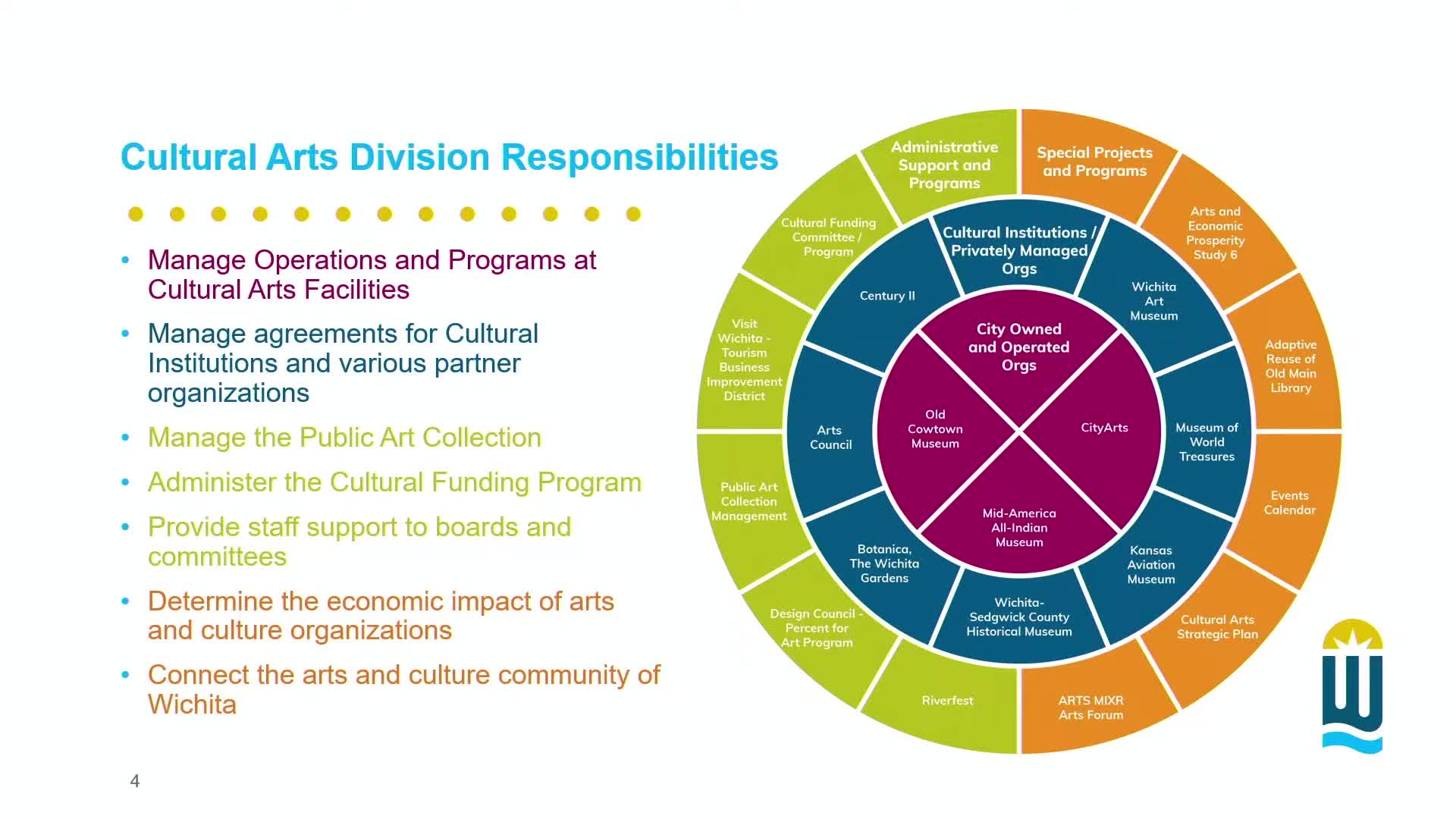City arts program tracks underserved residents to increase cultural access
May 10, 2025 | Wichita City, Sedgwick County, Kansas
This article was created by AI summarizing key points discussed. AI makes mistakes, so for full details and context, please refer to the video of the full meeting. Please report any errors so we can fix them. Report an error »

In the heart of Wichita's city hall, council members gathered to discuss the progress of the city's cultural arts initiatives, a topic that resonates deeply with the community's commitment to inclusivity and accessibility. The meeting, held on May 9, 2025, highlighted the city's ambitious goals aimed at enhancing participation in the arts, particularly among historically underserved populations.
The council outlined four primary goals as part of their cultural arts plan. The first goal focuses on increasing participation from residents in various ZIP codes, especially those who have been historically overlooked in cultural opportunities. The second goal aims to strengthen the capacity of the city's cultural division, while the third seeks to maximize the impact of city-owned assets and facilities. Lastly, the fourth goal is to stimulate the creation of new artistic works.
As the discussion progressed, council members provided updates on the objectives tied to these goals. A significant achievement noted was the establishment of baseline data for arts participation across different ZIP codes, a first for the city. This data collection involved 38 organizations that received funding, with 13 providing detailed ZIP code information. The council reported tracking interactions from 1,400 unique ZIP codes, spanning all 50 states and 46 countries, including Puerto Rico and Guam.
The results revealed that there were 93,000 interactions with the arts reported by residents through the participating organizations. This data not only serves as a foundation for future initiatives but also allows the city to identify areas where arts access is lacking. The council emphasized the importance of understanding population density in these ZIP codes, noting that some areas, like ZIP code 67227, have very few residents, which can skew the perception of arts engagement.
Moving forward, the council is committed to using this data strategically to encourage cultural partners to focus their efforts on underserved areas. The ultimate mission remains clear: to ensure equitable access to the arts for all residents of Wichita. As the meeting concluded, the council's dedication to fostering a vibrant and inclusive cultural landscape was evident, leaving attendees with a sense of optimism about the future of the arts in their community.
The council outlined four primary goals as part of their cultural arts plan. The first goal focuses on increasing participation from residents in various ZIP codes, especially those who have been historically overlooked in cultural opportunities. The second goal aims to strengthen the capacity of the city's cultural division, while the third seeks to maximize the impact of city-owned assets and facilities. Lastly, the fourth goal is to stimulate the creation of new artistic works.
As the discussion progressed, council members provided updates on the objectives tied to these goals. A significant achievement noted was the establishment of baseline data for arts participation across different ZIP codes, a first for the city. This data collection involved 38 organizations that received funding, with 13 providing detailed ZIP code information. The council reported tracking interactions from 1,400 unique ZIP codes, spanning all 50 states and 46 countries, including Puerto Rico and Guam.
The results revealed that there were 93,000 interactions with the arts reported by residents through the participating organizations. This data not only serves as a foundation for future initiatives but also allows the city to identify areas where arts access is lacking. The council emphasized the importance of understanding population density in these ZIP codes, noting that some areas, like ZIP code 67227, have very few residents, which can skew the perception of arts engagement.
Moving forward, the council is committed to using this data strategically to encourage cultural partners to focus their efforts on underserved areas. The ultimate mission remains clear: to ensure equitable access to the arts for all residents of Wichita. As the meeting concluded, the council's dedication to fostering a vibrant and inclusive cultural landscape was evident, leaving attendees with a sense of optimism about the future of the arts in their community.
View full meeting
This article is based on a recent meeting—watch the full video and explore the complete transcript for deeper insights into the discussion.
View full meeting
